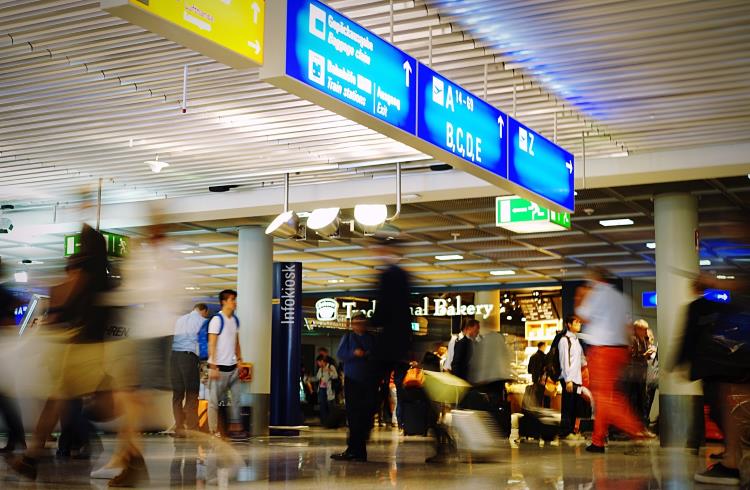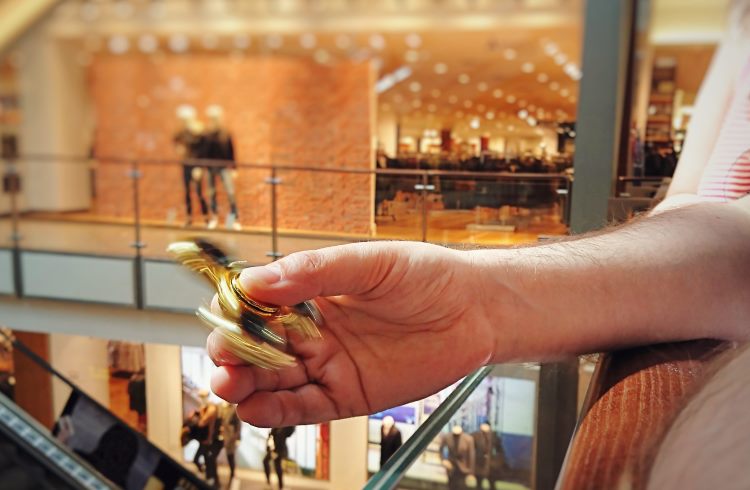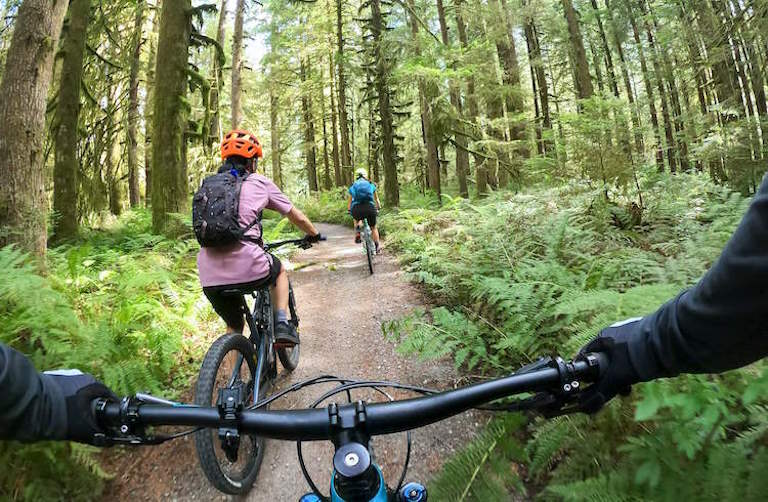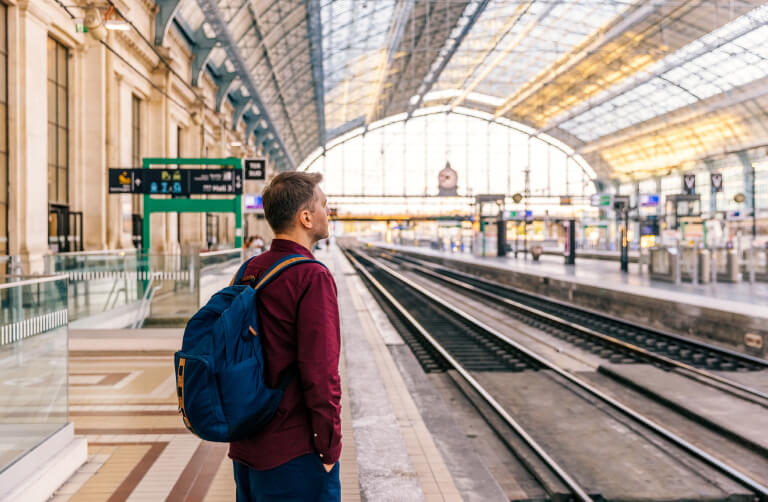As much as we love travel, it has its challenges. For autistic travelers, it can be especially stressful – even more so when traveling alone. Journalist Lydia Wilkins shares her firsthand advice on autism and travel.
 Photo © Getty Images / Yiu Yu Hoi
Photo © Getty Images / Yiu Yu Hoi
Many of us have been feeling a lot of wanderlust lately – it's a relief that we’re able to travel again. However, for some of us, there’s a stipulation attached. Traveling when you’re autistic can be incredibly stressful even without a pandemic to contend with.
- What is autism spectrum disorder?
- Barriers to be aware of as an autistic traveler
- Traveling while autistic: how to prepare
- Coping with travel barriers
- Some of my favorite autism-friendly places for travelers
- Traveling with an autistic person
What is autism spectrum disorder?
Autism Spectrum Disorder (sometimes referred to as Autism Spectrum Condition), is a neurological condition that can impact communication and socializing skills. Autistic people are highly sensory people, in that they may be hypersensitive or hyposensitive to different sensory input.
I was diagnosed with autism in 2015. In my case, I am hypersensitive to noise – this just doesn’t mean hating loud noises, it means I can’t filter sound. When the buildup becomes too much, I’m unable to function – it impacts my speech, behavior, energy levels, and more. Though I’m verbal (unlike some autistic individuals) I find it difficult to communicate with people in many circumstances and cannot read faces at all. My spatial awareness is also pretty shocking, and my motor skills leave a lot to be desired. I can sometimes be overly literal, too.
Barriers to be aware of as an autistic traveler
Travel presents a multitude of barriers connected to an individual’s own profile – not everyone’s needs are the same. All human beings are unique, after all.
Accessibility – meaning an environment that is designed to be used by people with disabilities – also means different things to different travelers. For me, accessibility means having information clearly communicated and broken up into smaller pieces, rather than bunched together. It can mean providing quiet rooms to allow escape from noisy environments. It can also mean that airport, railway, or hotel staff are trained in ways to assist autistic people and avoid triggers, such as forcing eye contact. Accessibility has only recently begun to improve for autistic travelers, and still has a long way to go.
Because of my hypersensitivity to noise, busy environments are a challenge, such as a shop where there are a lot of people, loud music, announcements, and so on. An airport is my least favorite place for this reason. Going through security is not fun – especially when the social expectations are not clearly spelled out. I have been shouted at in the past for not intuitively understanding the processes.

I find it very stressful when information changes at the last minute, with services sometimes offering up contradictory corrections. In the UK, the railway networks – which I rely on – are notorious for cancelling frequently or changing platforms suddenly with no warning. Having to figure that out in real time adds a degree of anxiety; if it’s a flight, that anxiety escalates.
I honestly miss traveling a lot; I am dreaming of going back to Manhattan. But the pandemic added an extra layer of complexity. COVID-19 rules and regulations seemed to change constantly, and they weren’t always well communicated.
So, how can autistic travelers move around safely and accessibly? Here is some advice based on my own prior experiences.
Traveling while autistic: how to prepare
Knowing yourself can be helpful in negating potential sensory triggers or working your way around inaccessible environments; it’s a calculation we must make quite often as autistic people. Can I manage changes in my timetable if I have all the information written down? Who will help me if I have questions? These are a couple of very key concerns.
Planning to travel takes a lot of effort. Prior to the pandemic I had flown alone just once, on a flight to the United States. My arrival in the US coincided with that of COVID-19. Yep. I had been planning for almost a year, figuring out all the details to help me across the Atlantic from the UK.
Visual prompts help me a lot because I experience issues with executive functioning – essentially, the little Personal Assistant that we all have inside our brains does not want to play ball. I keep everything in a specially designated planner, with maps, lists, timetables, itineraries, color coding, and a pocket at the back for travel documents.
I also research access schemes or systems ahead of time. For example, the UK, some parts of the US, and a few other countries use the Sunflower Lanyard program, which when worn discreetly signals you have an invisible disability and shares lists of places nearby that offer support and help such as shops, sports facilities, transport hubs etc. You don’t have to justify yourself – all you have to do is wear it, and help will be given. Some venues, such as banks, have staff specially trained to recognize the lanyard and automatically make accommodations; in a place such as an airport, you may have to approach an assistance desk. Airport websites have more information about assistance they provide to disabled travelers – sometimes you must book in advance.
Coping with travel barriers
I always look for ways to negate issues before they arise. Here are some suggestions:
- Travel with a sensory kit. Think ear plugs, fidget toys etc. Fidget toys such as tangles can provide extra emotional regulation in an overwhelming environment; they allow us to cope more easily for just that little bit longer. I always keep sensory aids handy in my handbag or attached to my sunflower lanyard.
- Use a timetable as a form of itinerary. It’s helpful for me see the transition between tasks or activities – making sure I have enough time to get somewhere, change train platforms, and so forth – and tick everything off. This helps reduce my stress if my planned routine suddenly changes.
- Never be without your mobile phone. If I need help, I call one of the people I know and interact with most. If I’m close to home, they can often meet me and even walk me to the correct drop off point.

Some of my favorite autism-friendly places for travelers
Britain’s Heathrow and Stanstead airports offer accessible services for autistic people, including supporting the Sunflower Lanyard scheme, providing extra assistance (which can be arranged in advance), and more. An increasing number of airports offer soothing sensory rooms. New York’s Central Park Zoo is fabulously accessible, with very clear signage and reliable schedules; if you make it to Rotterdam or London, consider attending a Street Art Tour – they have a set structure that’s well suited for autistic travelers.
Traveling with an autistic person
Here's how to help an autistic person you're traveling with. First of all, do not shout or tell us to calm down. It’s so frustrating to be told that. Autism does not come with an “off” switch! If we can’t speak coherently (or at all), still listen – even if we are in the throes of a meltdown, or we don’t seem to be acting normally. We can’t always tell you what the problem is, which is why avoiding potential triggers always helps. Don’t force eye contact, which can be very uncomfortable for us. Helping us manage through confusing environments can go a long way, as well as ensuring our sensory needs – i.e., not too much noise – are being met. You can do that by learning the layout of airport or train terminals or finding out about what accessibility adjustments the venues offer. If you need to change a plan, be clear and upfront about it.
Related articles
Simple and flexible travel insurance
You can buy at home or while traveling, and claim online from anywhere in the world. With 150+ adventure activities covered and 24/7 emergency assistance.
Get a quote


No Comments